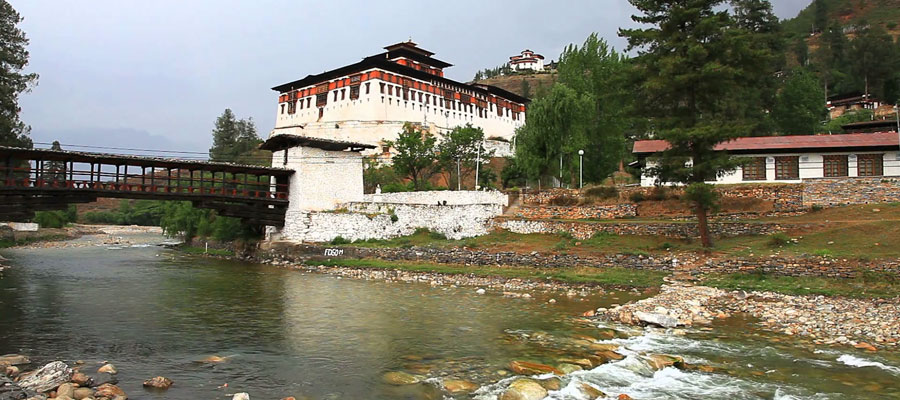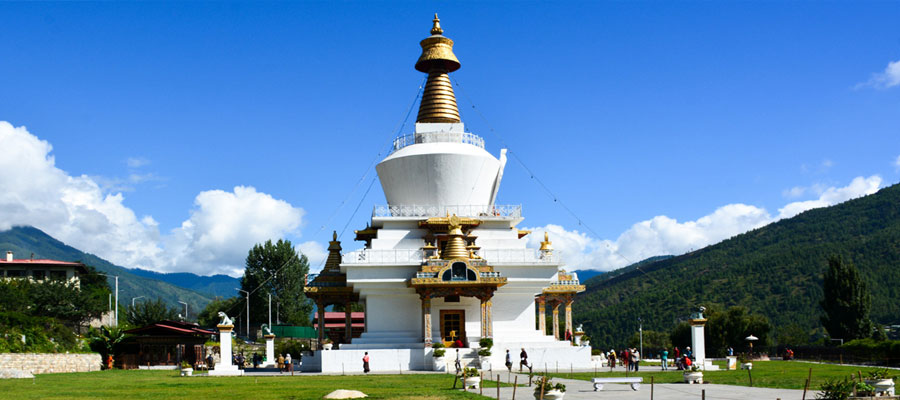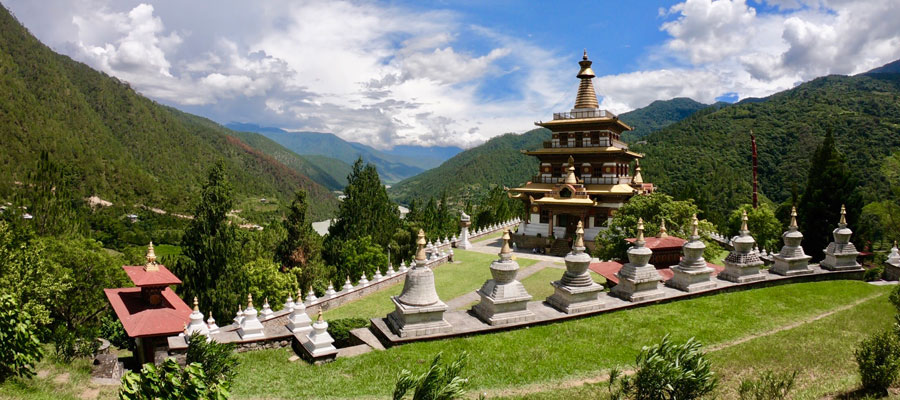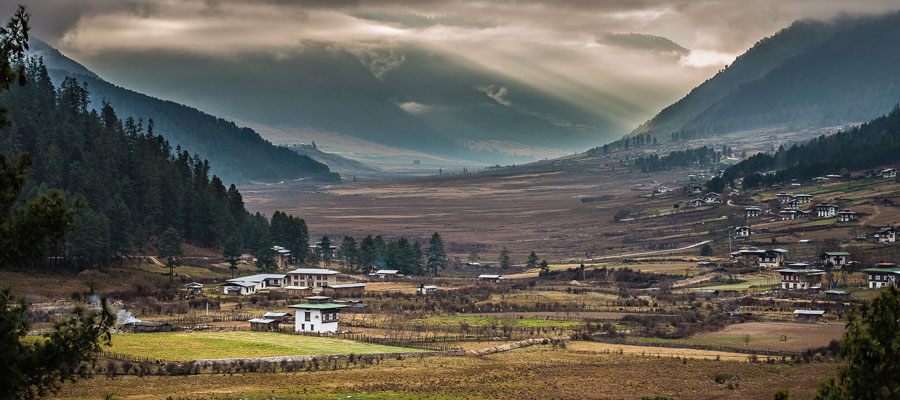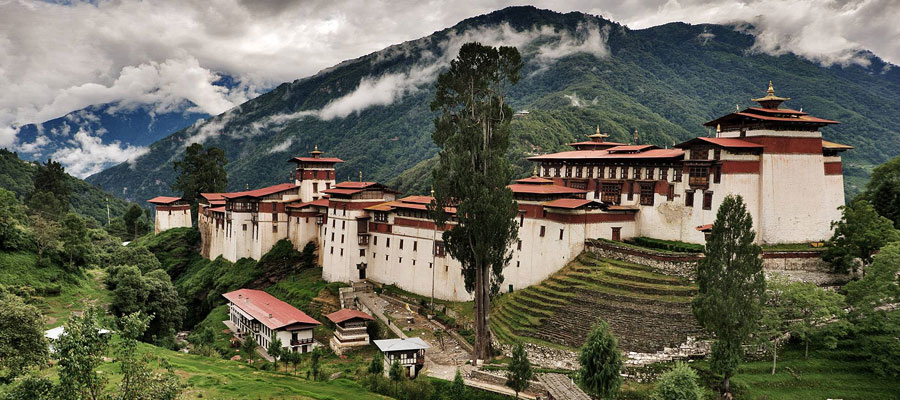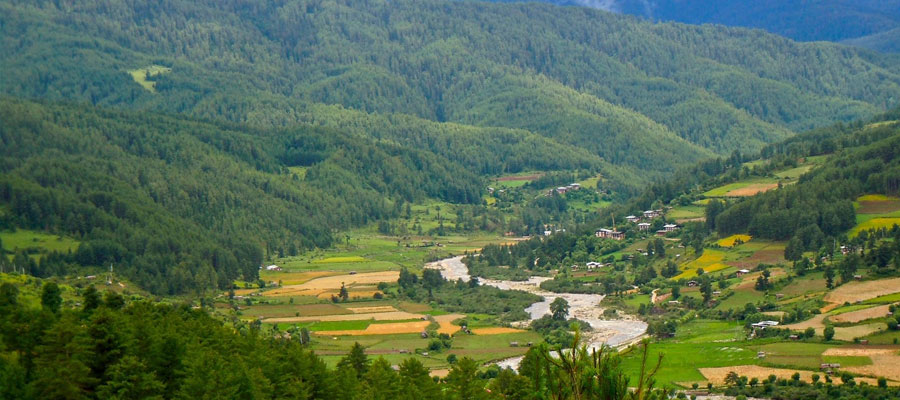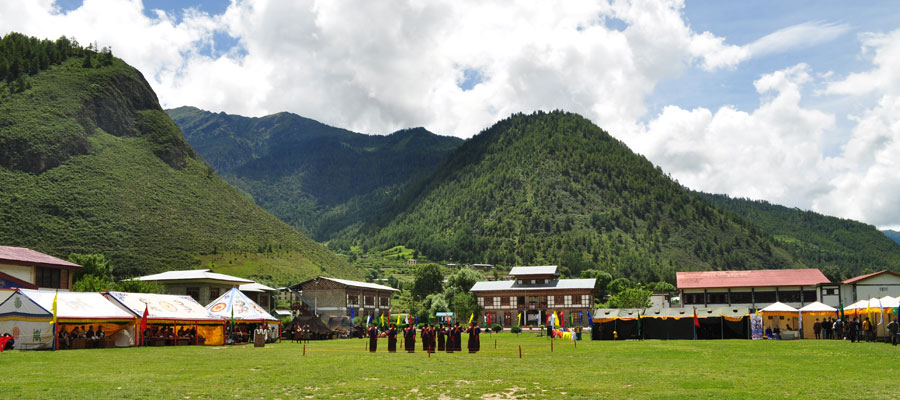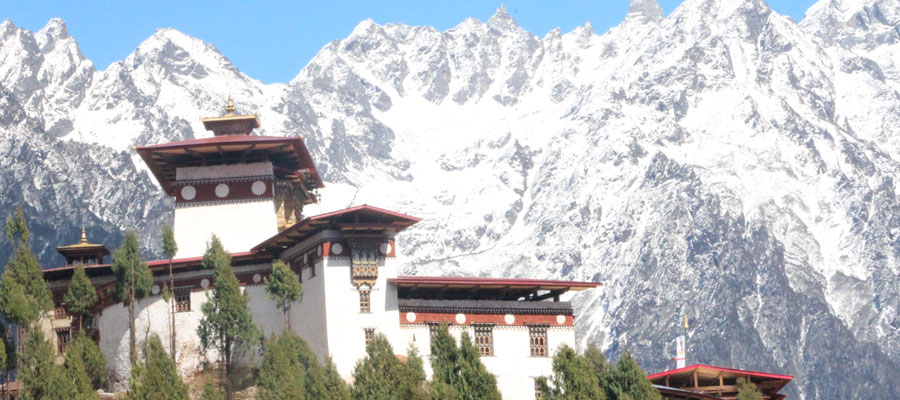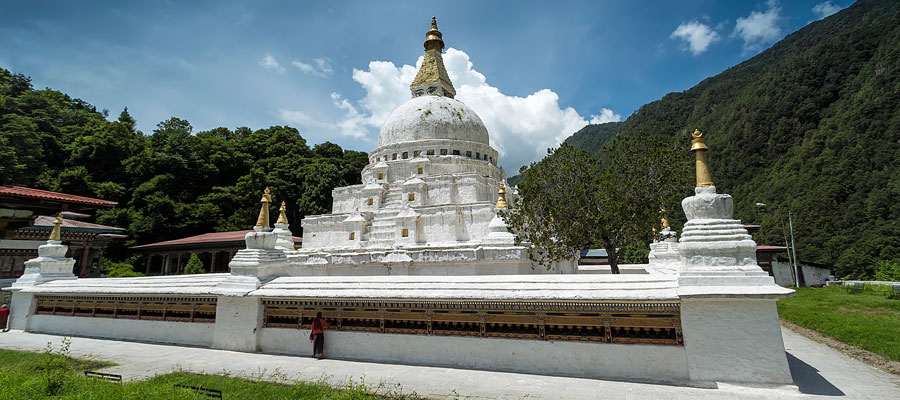Bhutan is divided into 20 regions called the Districts. Each district is subdivided into smaller regions called blocks or Gewogs (In Bhutanese term). The blocks or Gewogs are comprised of certain number of villages, towns and cities.
Destinations & Places
Paro
This picturesque region is one of the widest valleys in the kingdom and is covered in fertile rice fields and has a beautiful, crystalline river meandering down the valley.
Thimphu
Thimphu is the most modern city in Bhutan with an abundance of restaurants, internet cafes, nightclubs and shopping centres. However, it still retains its’ cultural identity and values amidst the signs of modernization.
Punakha
Punakha Dzongkhag has been inextricably linked with momentous occasions in Bhutanese history. It served as the capital of the country from 1637 to 1907 and the first national assembly was hosted here in 1953.
Wangdue Phodrang
One of the most notable sites in the district is Phobjikha Valley. This valley is the habitat of the rare and endangered Black Necked Cranes that roost there during their annual migrations.
Trongsa
The Vanguard of the Warriors – Trongsa Dzongkhag is located near the centre of Bhutan and was considered crucial in controlling the kingdom in earlier years due to its strategic position.
Bumthang
This dzongkhag is one of the most richly endowed districts in terms of historical and spiritual legacy. Some of Bhutan’s oldest and most venerated temples are found in Bumthang, including Jambey Lhakhang.
Haa
Haa’s major feature is the Haa Valley, a steep north-south valley with a narrow floor. The name Haa, connotes esoteric hiddenness. An alternative name for the district is “Hidden-Land Rice Valley.
Gasa
Gasa has become a tourist destination because of its pristine forests and the exceptionally scenic location of its Dzong. It’s know for Snowman Trek – one of the most challenging treks in the Himalayas.
Trashi Yangtse
Trashi yangtse district is home to some of the country’s important protected areas. It contains the Kulong Chhu Wildlife Sanctuary, established in 1993, which itself is part of the larger Bumdeling Wildlife Sanctuary.
© Shangrila Footprints

